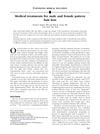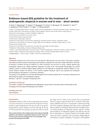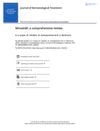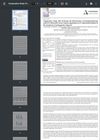1 year year update (.5 mg Dut, 2.5 mg OM) Progress Pictures 2/15/2025
A 27-year-old male experienced significant hair regrowth using 0.5 mg Dutasteride and 2.5 mg Oral Minoxidil daily, with minimal side effects. He noticed improvement in hairline and crown after an initial shedding phase, and he did not use Finasteride prior to this treatment.
View this post in the Community →
Similar Community Posts Join
6 / 1000+ resultscommunity No longer seeing any progress, really worried and panicking.
The user is experiencing increased hair thinning and shedding despite using oral dutasteride, oral minoxidil, topical dutasteride, and ketoconazole shampoo. Many recommend considering a hair transplant or embracing baldness, as current treatments seem ineffective.
community Apostles Creed: On The Third Day, He Rose Again From The Dead. 9 Months Dutasteride 1mg daily and Oral Minoxidil 2.5-5mg daily on Diffuse Unpatterned Alopecia
The conversation is about a person's positive experience with Dutasteride 1mg and Oral Minoxidil 2.5-5mg daily for Diffuse Unpatterned Alopecia, showing significant hair regrowth after 9 months. They mention a tough initial shedding phase, no side effects after 9 months, and a preference for oral treatments due to convenience and pet safety.
community Switching from Topical to Oral Minoxidil.
Switching from topical to oral minoxidil for hair loss, with plans to use it alongside dutasteride. Users report mixed experiences, including increased body hair, potential heart-related side effects, and varying hair regrowth.
community Oral Min is much better than topical
Oral minoxidil is seen as more effective and convenient than topical minoxidil for hair regrowth, but it may cause heart-related risks. Users often combine it with finasteride or dutasteride, though some prefer topical treatments due to safety concerns.
community Roughly one year on finasteride
The conversation is about someone's positive experience with 0.5 mg of finasteride daily for hair loss, noting potential contributions from vitamins and health improvements. Side effects and observations from others include watery semen and questions about hair regrowth and shedding phases.
community I destroyed my scalp so you wouldn't have to: here's what happens when you quit topical minoxidil
Quitting minoxidil can lead to significant hair loss, even in areas that were not thinning before, as hair becomes reliant on the treatment. Some users also report losing hair gains when stopping minoxidil despite taking finasteride.
Related Research
6 / 1000+ results
research Androgenetic Alopecia: A Review and Emerging Treatments
Hair loss, known as Androgenetic Alopecia, is often caused by hormones and can be diagnosed using noninvasive techniques. Treatments include topical minoxidil and oral finasteride, with new treatments being explored. There may also be a link between this type of hair loss and heart disease risk.

research Medical Treatments for Male and Female Pattern Hair Loss
Minoxidil and finasteride treat hair loss in men, while minoxidil treats hair loss in women.

research Evidence-Based Guideline for the Treatment of Androgenetic Alopecia in Women and Men – Short Version
Use minoxidil for hair loss treatment; assess results after 6 months.

research Minoxidil: A Comprehensive Review
Minoxidil effectively treats hair loss, especially androgenetic alopecia, but needs more research for better understanding.

research Comparative Study Evaluating the Effectiveness of Intradermotherapy with 0.5% Minoxidil Versus Topical Application of 5% Minoxidil Solution in the Treatment of Androgenetic Alopecia
Intradermotherapy with minoxidil is as effective as topical application for treating hair loss.

research Androgenetic Alopecia: An Update on Pathogenesis and Pharmacological Treatment
Current treatments for androgenetic alopecia are complex and promising, but more research is needed.